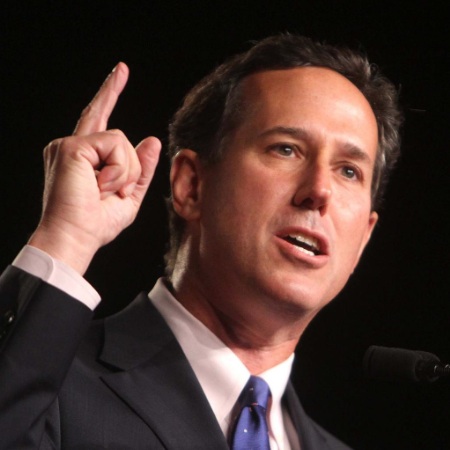Is it just me, or is all of the rhetoric about gun control getting a bit overheated?
If there are two sides – pro-gun and anti-gun – then I’d have to put myself on the side that favors more control than we have now. But the spectrum of options available to us as a society is wide-ranging, and the changes we are talking about are relatively small. There’s no serious movement to ban and confiscate guns. Nobody is proposing allowing citizens to own biological, chemical, or nuclear weapons. Where we come down is going to be somewhere very much in the middle of these polar extremes, and pretty close to where we are now.
You wouldn’t know it by listening to the bombast coming from the right, though. It’s as though all of the issues from the 2012 election have faded away, and conservatives have decided to concentrate their efforts over the one issue where they feel like they’re on solid ground. Their arguments range from absolutist interpretations of the Constitution to catchy slogans to actual threats of violence. The threats of violence in particular seem an odd strategy for convincing us that they should keep their guns, but it’s hard to stay rational once the panic sets in. When the only tool you have is a TEC-9, the whole world looks like Call of Duty. I will admit that some of the slogans use some nice wordplay. “The only thing to stop a bad guy with a gun is a good guy with a gun.” Nice use of antithesis with parallel structure! And then, there’s the Constitution…
Just as the First Amendment doesn’t give you the right to yell “Fire” in a crowded theatre, the Second Amendment doesn’t give you the right to turn a traffic jam into the end of a Quentin Tarantino movie. It is true that the founders gave us the right to keep and bear arms so that we could protect ourselves from government tyranny. The only problem is that the people currently making that argument are the same people who screamed that the Affordable Care Act was government tyranny. So, Freedom-Protectors, at what point are you planning to break out the arsenal? And when you fantasize about protecting our freedoms with an assault rifle, precisely who is it that you imagine yourself gunning down? American soldiers? Uniformed police officers? Elected officials? Federal agents? Protecting our freedom sounds pretty messy.
Speaking of the Affordable Care Act, one of the heartwarming things to come out of the gun-control debate is to see the right starting to call for better mental healthcare in the wake of the school shootings. Yeah, someone should get on that. I’m thinking some kind of public option, or even a single-payer system. What say you?
So, really, most of the pro-gun arguments I’ve heard are pure nonsense, and are embraced largely for their favorable conclusion: we should be allowed to have guns. The good news for gun enthusiasts, though, is that they don’t actually need to make a case to protect guns. In a free society, the burden of evidence is on those of us who would take rights away. And most people who are in favor of guns largely have positive experiences with them. They go hunting on the weekends, or they take their kids to the shooting range. Maybe they like to do a little skeet-shooting at Camp David. Everyone has fun and nobody gets hurt. They aren’t bothering anybody, and don’t understand why they should have to make any changes in their lifestyle just because some lunatic decides to go on a rampage in a school or a movie theatre. I agree.
What we’re talking about, though, is just some simple common sense reforms, such as requiring background checks or restricting assault weapons. We regulate cars better than we regulate guns, and yeah, you can have as many cars as you want. One of the weapons under discussion is called the Street Sweeper. Whoever named that gun had a pretty good idea about what it was primarily going to be used for. We should take notice. That doesn’t make a good fundraising pitch for the NRA, though, so they talk about the government coming for your guns, a scenario that doesn’t even make practical sense let alone political sense.
Ultimately, the actual changes being proposed are slight and incremental. We can have reasonable discussions about whether or not we should do them, but doing them won’t necessarily bring about major changes in gun violence in this country. Nor will they amount to an egregious violation of civil liberties. At this point, the heat generated by the argument is mostly about culture. There is one culture that wants an armed society, and another culture that doesn’t. We’ll argue it out and then we’ll vote through our elected representatives. But in so much as it is about culture, it’s worth giving some thought about what kind of country we want to live in.
Which side are you on? The litmus test is not the Sandy Hook school shooting. It’s not Aurora or Tuscon or Columbine. We’re all against random shootings of innocent people. The real litmus test centers on the events of February 26, 2012. That was one year ago tonight. That was the night that George Zimmerman shot and killed Treyvon Martin.
That much is certain, but the details are still murky a year later. That didn’t seem to matter so much at the time. People on both sides of the debate rushed to judgement before all of the facts were in. Did a trigger-happy gun nut racially profile a black kid and then shoot him? Or, is it true that a vigilant neighborhood watchman bravely defended his person and his community from a dangerous thug who attacked him without provocation? Or is the truth somewhere in the middle? Where it always, always is.
In the examination of this particular incident, it matters a great deal. This is a real case. One person is dead, another is on trial for his murder. A jury will have to weigh the evidence and make a serious deliberation to make sure their determination is just. But in a more general sense, it doesn’t really matter what happened this one time.
There is a more generalized version of the incident that has played out in the media and in the imaginations of everyone who has a purely political stake in the outcome for the past year. In the real case, we want to know facts, details, evidence. In the imaginary case, these things are a distraction. They take the case further away from what we need it to be. Because when the case remains general, we can imagine all of the possible angles and discuss how we feel about them. It’s not hard to imagine each various interpretation of this one incident being true in another similar incident. What we’re really arguing about is the sum total of all of the possible permutations of the event. What we’re really arguing is about the next time. I can’t tell you what to think about that, but I can tell you what I think.
I’m not really afraid of bad guys with guns. Maybe I should be. Studies show that people who tend to be more fearful skew conservative, so maybe they feel like they really need to protect themselves against bad guys with guns. For my part, I feel like there are so many other things out there that are going to get me first that I really don’t put it high on my list. So, I don’t live in fear of bad guys with guns. What terrifies me beyond belief is good guys with guns.
Good guys come in all shapes and sizes, and I don’t like the idea of them all carrying guns. There are so many more good guys than bad guys, and with a wider range of skills, judgment, and common sense. Some people carry a gun hoping they will never have to use it. Other people carry a gun with a hope that they will. And then there are the mistakes. Recall the vice president who shot his friend in the face while hunting. Recall the heroic athlete who fired four shots into a bathroom door. Choose your favorite statistic about guns kept in the home. It turns out that introducing a new gun into a situation is almost always a bad idea, unless you are well trained and have strictly enforced rules of engagement.
George Zimmerman was supposed to be a good guy with a gun. Whether he turned out to be or not depends on your culture.









